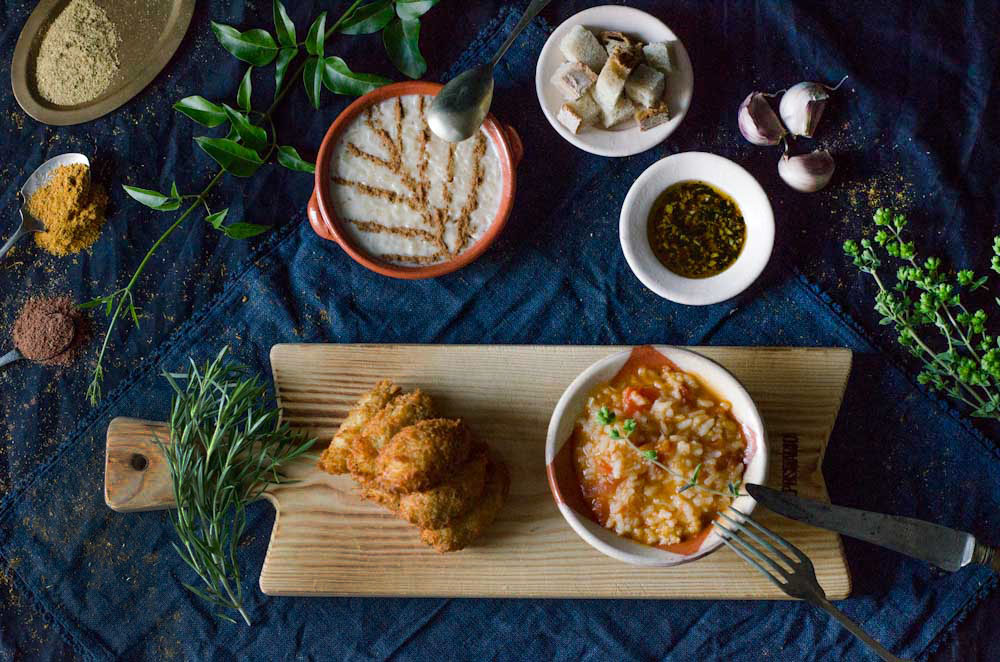
08 Jun A monsoon scented Portuguese table
It was a dark, not so cosy night. The sky held chalky stars over our heads and we were all shivering with the cold fresh air. We had met only a few days ago but we felt like kindred spirits. Outside the tiny crude pub, we were hoping to experience a true moment of Irish openness and genuine atmosphere. And to bond among the dark flavours of a few Guinness’s.
Inside, moving along with the flirtatious chitchat of the locals, we found a spot in a corner lined by wood-panelled walls and crowned by a strange collection of memorabilia. Amidst rows of worn books, foreign scattered souvenirs, posters of sports teams and a picture of the Taj Mahal, there it was: a map of the South Asian Subcontinent, a world of its own, almost unknown to all of us, eager to burst with novelties, to draw in our imagination the diverse geography that landscapes the Subcontinent’s three core lands – India, Pakistan and Bangladesh – and to conquer us by the stomach, seducing us with all the distinctive tastes and culinary peculiarities.
That’s how we all experienced for the first time the passionate fervour of Sumayya Usmani about her native country, Pakistan. And that’s how we heard about the country’s traditional salt mines, its gorgeous mountainous chains and its 1046 km of sandy coastline, breathing in the scents brought by heavy rainfall during monsoon season and her grandmother cooking.
I learned since then that Pakistani food differs from the one from India and the rest of the Subcontinent as it has greater variety of meat dishes and deeper roots in Central Asian and Middle Eastern cuisine due to its crossroads location; that Pakistan is a spice loving country, vibrantly ranking 16th on the 2012 Happy Planet Index, and that flowers and herbs enliven the lives and meals of its people. I decided they should enliven mine as well. I wanted to know if some of the most iconic Portuguese ingredients and dishes would date Masala Monsoon, Sumayya’s new floral garam masalas, wondering if her range of hand blended spices with aromatic dried flower petals would give an elegant and subtle exotic feeling to the dishes or would bring in all the impressionist scents and visuals of Asian Pakistan. Here’s what I cooked up.
Recipe #1 Rose olive oil bread dip (Serves 2)
In a small bowl I placed 4 tbsp of olive oil, to which I added some minced fresh coriander (about 1 tsp) and a garlic clove, diced and crushed. Seasoned with salt to taste and 1/2 tsp (levelled) of Masala Monsoon Rose Petal Garam Masala. Mixed it all well and dipped the bread in it.
Recipe #2 Marigold fish cakes (Serves 6)
In a pan, I boiled 8 medium sized potatoes until firmly cooked, drained them well, mashed them with a potato masher and placed it in a bowl. In another pan filled with hot water I cooked 4 salt cod fillets (already soaked and unsalted). Then, drained, flaked and shredded the salt cod fillets. On the side diced 2 shallots, into tiny tiny bits along with 2 garlic cloves. Mixed the cod with the potatoes, the shallots and the garlic. And added the seasonings: a pinch of salt, some minced coriander and 2 full tsp of Masala Monsoon Marigold Petal Garam Masala. Mixed thoroughly. To help bind the mixture added 2 egg yolks. With the help of two table spoons divided the misture into small oval shaped cakes and placed them in the refrigerator for 10 minutes (to help them firm up). Filled a skillet with enough vegetable oil to cover half the fish cakes and heated the oil to fry them until golden brown on both sides. Served on the side with a smooth tomato risotto.
Recipe #3 Jasmine rice pudding (Serves 6)
Brought 1 dl of water to the boil and added 250 g of rice. When most of the water had evaporated, added 5 dl of lukewarm milk and let it all simmer for about 15/20 minutes. Afterwards, added another 5 dl of milk, 150 g of caster sugar, 2 lemon peel slivers, 1 levelled tbsp of Masala Monsoon Marigold Petal Garam Masala and a cinnamon stick. Let it cook until some of the milk evaporated and the mixture slightly thickened.
On a small bowl placed 2 egg yolks and mixed in them some of the liquid still remaining in the cooking pot. Took the pot off the heat and mixed in the eggs. Returned all to the heat and added 1 tbsp of butter, swirling everything until melted. Let it all boil again. Turned off the heat and poured the mixture into individual bowls. Served decorated with cinnamon powder.
NOTES
If you want to get to know more about Sumayya’s work about Pakistani cuisine go to her blog and Facebook page:
https://www.facebook.com/sumayya.jamil
If you’re interested in buying or getting to know some of her fabulous floral masalas go to:
https://www.facebook.com/MasalaMonsoon
•
Uma mesa portuguesa com aroma a monção
A noite era negra e desconfortável. O céu tinha estrelas brancas sobre a nossa cabeça e o suspiro enregelado do ar fazia-nos tremer. Conhecíamo-nos apenas há um par de dias mas sentíamo-nos almas gémeas. À porta do pequeno pub, cru e humilde, ansiávamos por um encontro franco com os Irlandeses e com a atmosfera local. E partilhar um pouco de cada um de nós ao sabor de algumas Guinness.
Lá dentro, serpenteámos por entre o tagarelar namorador dos habitués e encontrámos lugar num canto forrado a painéis de madeira e por uma estranha coleção de memorabília. Por entre prateleiras com livros usados, lembranças difusas do estrangeiro, “posters” de equipas desportivas e uma fotografia do Taj Mahal, lá estava ele: um mapa do subcontinente indiano, um mundo próprio, quase desconhecido para todos nós, desejoso de irromper com novidades, de desenhar na nossa imaginação a geografia diversa que forma a paisagem das três regiões centrais do subcontinente – a Índia, o Paquistão e o Bangladesh – e de nos conquistar pelo estômago, seduzindo-nos com sabores e as muitas peculiaridades da sua gastronomia.
Foi assim que sentimos pela primeira vez o fervor apaixonado de Sumayya Usmani acerca da sua terra natal, o Paquistão. E foi assim que passámos a conhecer as tradicionais minas de sal do país, as suas arrebatadoras cadeias montanhosas e os cerca de 1046 km de areia que tapetam a sua costa, acompanhados sempre pelos aromas imaginados das chuvas fortes da monção e dos cozinhados da sua avó.
Aprendi desde então que a cozinha do Paquistão difere da da Índia e da do restante subcontinente pela maior diversidade de pratos de carne que comporta e pelas raízes profundas que tem na cozinha da Ásia Central e do Médio Oriente, devido à sua situação geográfica de encruzilhada; que o Paquistão é uma nação amante de especiarias, vibrante no 16º lugar que ocupa no 2012 Happy Planet Index e que as flores e ervas aromáticas animam a vida e as refeições do seu povo. Decidi que deveriam animar a minha também. Quis saber se alguns dos mais icónicos ingredientes e pratos portugueses aceitariam namorar com as masalas florais de Masala Monsoon, as novas misturas aromáticas de Sumayya, que combinam especiarias por ela selecionadas com pétalas secas de flores, questionando-me sempre se os seus sabores temperariam com exotismo subtil os pratos ou se os insuflariam de um impressionismo sul asiático. Eis o que cozinhei.
Receita #1 Azeite com rosas para molhar o pão (2 Pessoas)
Coloquei 4 colheres de sopa numa pequena tigela, adicionei coentros frescos picados (cerca de 1 colher de chá) e um dente de alho, primeiramente picado e depois esmagado. Temperei com sal q.b. e 1/2 colher de chá (nivelada) de Masala Monsoon Rose Petal Garam Masala. Misturei tudo muito bem e mergulhei nele o pão.
Receita #2 Pastéis de bacalhau com calêndula (6 Pessoas)
Numa panela cozi 8 batatas médias, escorri-as, esmaguei-as com a ajuda de um passevite e coloquei tudo numa tigela. Cozi 4 postas de bacalhau demolhado, que depois escorri e desfiei. Enquanto isso, piquei 2 chalotas e 2 dentes de alho em pedaços muito muito pequeninos. Misturei tudo – bacalhau, chalotas e alho – com as batatas. E temperei: uma pitada de sal, coentros picados q.b. e 2 colheres de chá (cheias) de Masala Monsoon Marigold Petal Garam Masala. Misturei meticulosamente. Para ajudar a ligar a mistura adicionei 2 gemas de ovo. Com a ajuda de duas colheres de sopa, dividi a mistura pelos vários pastéis e coloquei-os no frigorífico durante 10 minutos (para os ajudar a ganharem firmeza). Enchi a frigideira com óleo vegetal suficiente para cobrir metade da altura dos pastéis e fritei-os até ficarem dourados em ambos os lados. Servi-os acompanhados de arroz fofinho de tomate.
Receita #3 Arroz doce com jasmim (6 Pessoas)
Fervi 1 dl de água e adicionei 250 g de arroz. Quando a maioria da água tinha evaporado, adicionei 5 dl de leite e deixei tudo cozinhar em lume brando durante cerca de 15/20 minutos. Depois disto, adicionei outros 5 dl de leite morno, 150 g de açúcar fino, 2 tiras de casca de limão, 1 colher de sopa de Masala Monsoon Marigold Petal Garam Masala (nivelada) e 1 pau de canela. Deixei cozinhar até algum do leite ter evaporado e a mistura engrossar ligeiramente. Numa pequena tigela, coloquei 2 gemas de ovo e misturei nelas algum do líquido ainda restante na panela que estava a cozer o arroz. Tirei a panela do lume à qual adicionei os ovos, mexendo. Voltei a colocar a panela ao lume e adicionei 1 colher de sopa de manteiga, misturando tudo até esta derreter. Deixei ferver tudo novamente. Desliguei o lume e verti o arroz doce para tigelas individuais. Servi decorado com canela em pó.
NOTAS
Se quiserem conhecer melhor o trabalho de Sumayya acerca da cozinha paquistanesa dirijam-se ao seu blog e página de Facebook:
https://www.facebook.com/sumayya.jamil
Se estiverem interessados em adquirir as suas fabulosas masalas florais ou descobrir um pouco mais acerca delas vão a:




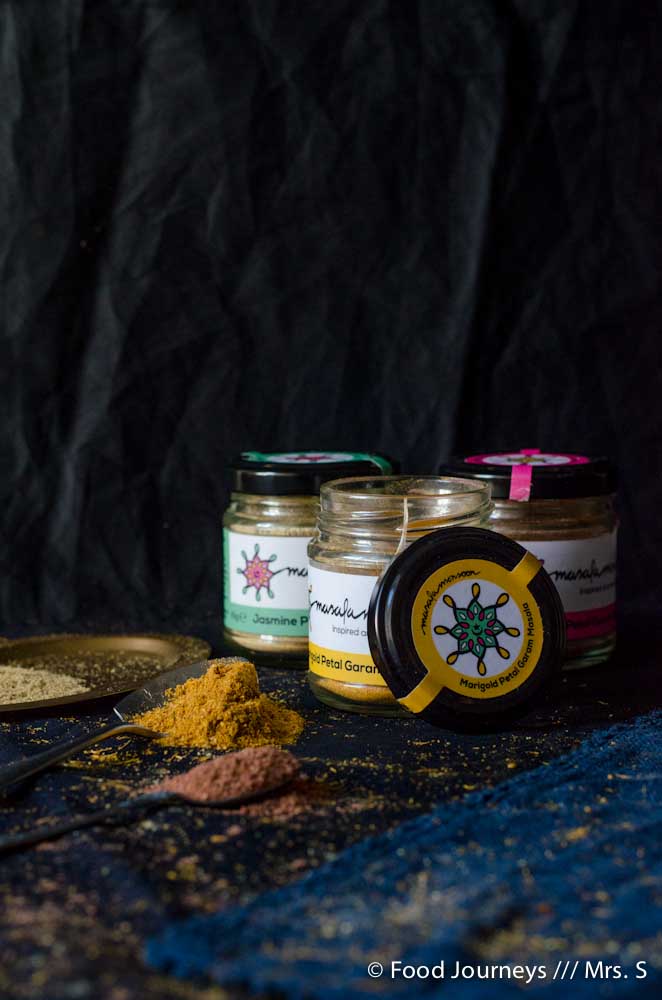
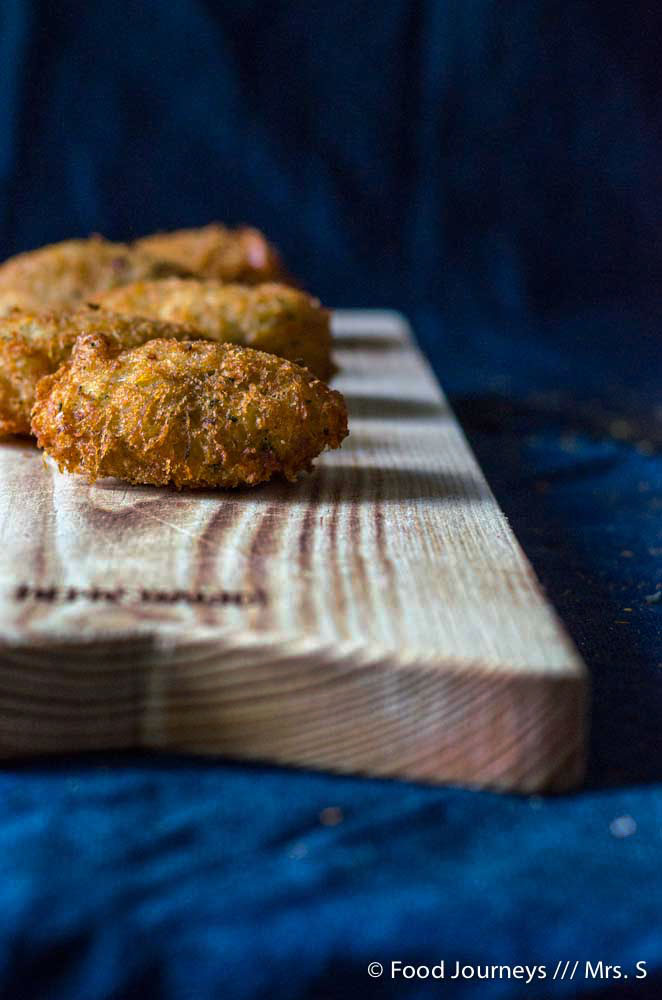

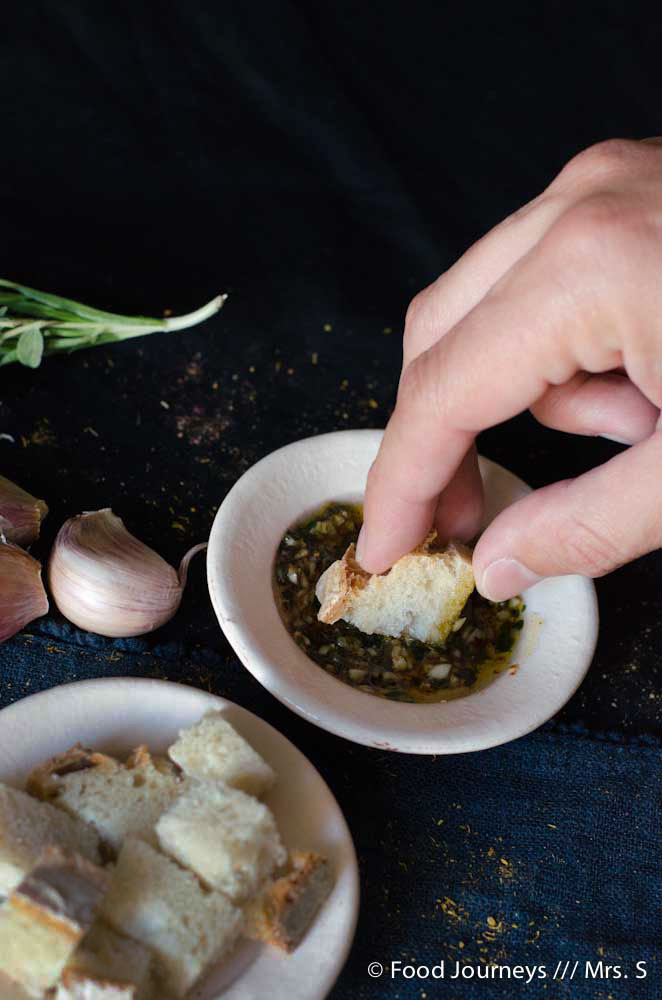
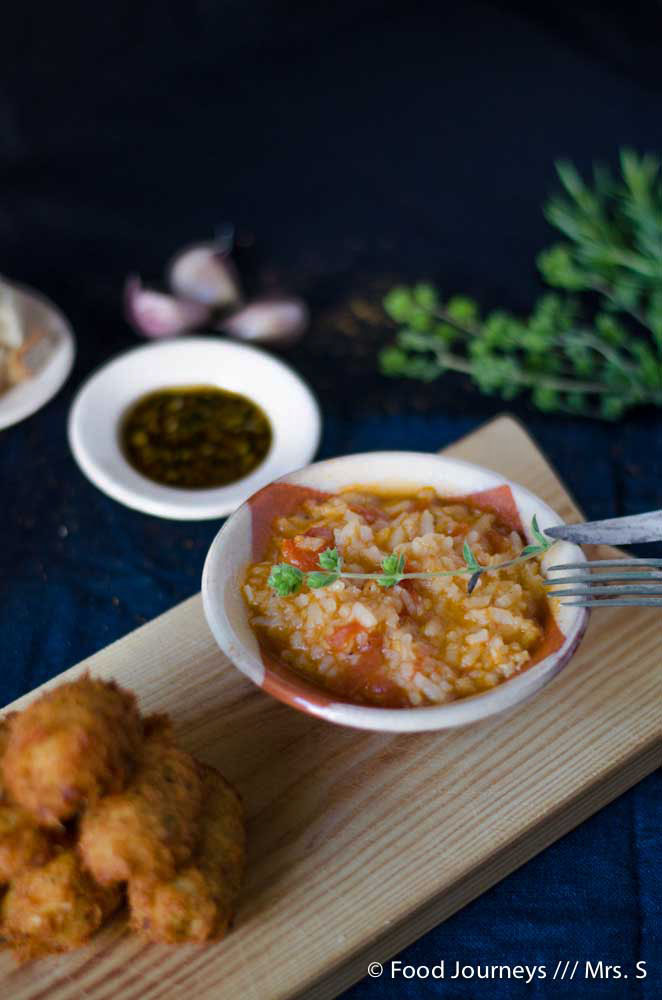
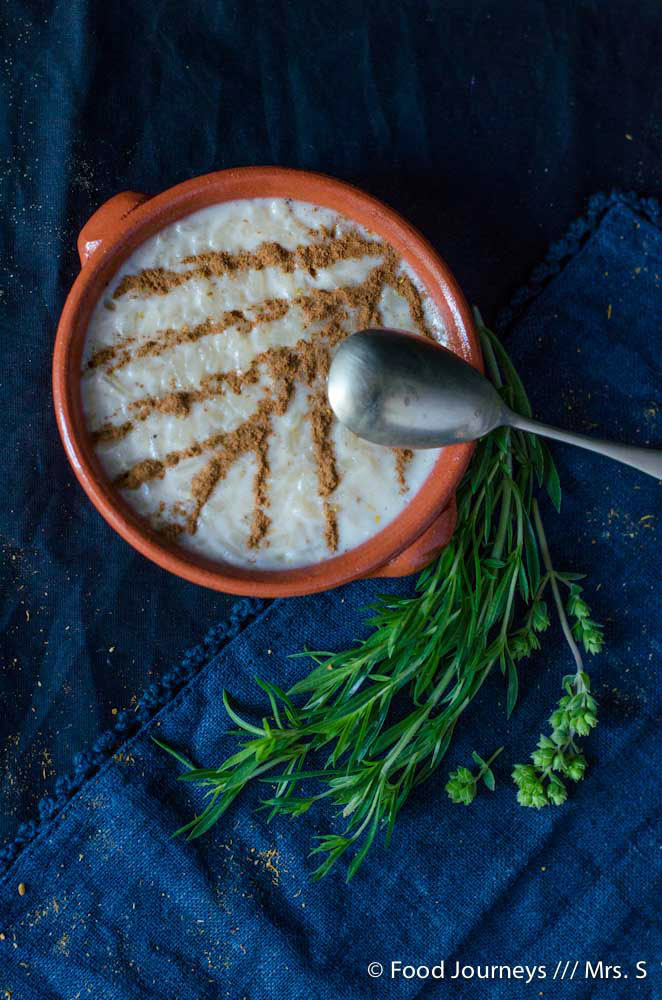
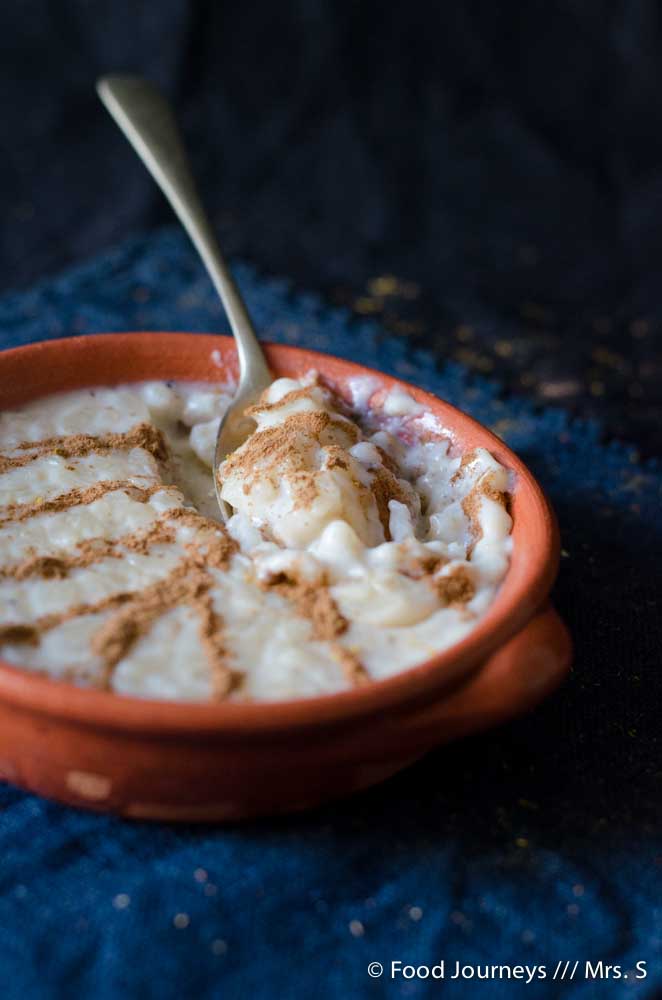
No Comments